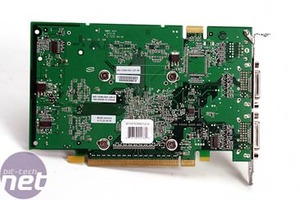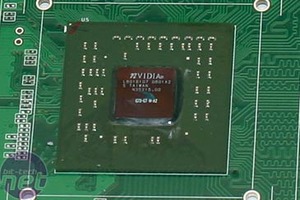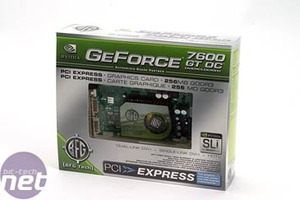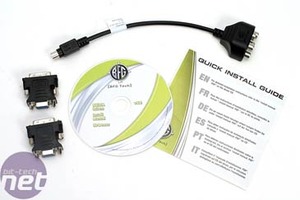BFG Tech GeForce 7600 GT OC
Core Clock: 580MHzMemory Clock: 1450MHz
BFG Tech's GeForce 7600 GT OC uses the same board and heatsink design as the reference card, which is a rather small copper-based design with a variable speed fan. BFG Tech has differentiated itself from other board partners by increasing the clock speeds from the default 560/1400MHz to 580/1450MHz. This should provide some small performance improvments and we'd expect the card to overclock pretty well, too.




G73 has five vertex shaders, twelve pixel pipelines and eight pixel output engines that are capable of writing colour and blending in the same pass. Aside from the vertex shader layout, G73 is essentially half of G71. To continue the trend, G73 also has embedded support for a single dual-link TMDS transmitter along with a second single-link TMDS transmitter.
The core has a surface area of 125mm² and there are 178 million transistors under the hood, meaning that the GPU packs a hell of a punch for such a small footprint. The size of the chip should also make for some great GeForce 7600 GT prices, as NVIDIA is able to get more chips out of each wafer.


The cooler / form factor: It's impressive to see that NVIDIA can get this core running at 580MHz with such a small heatsink, but this doesn't come without its drawbacks. The fan does spin up during heavy gaming and it's a little loud for our liking, but at least it stays at a consistent pitch. It thankfully doesn't rev up and down too much.
The board itself is far smaller than the Radeon X1800-series and also far smaller than the GeForce 7900 GTX. It's easy to fit into a cramped system and would be suitable for a small form factor or home theatre rig. Frankly, it's a far more appealing size than the behemoths we are having to get used to on the high end.

MSI MPG Velox 100R Chassis Review
October 14 2021 | 15:04






Want to comment? Please log in.